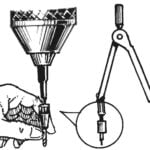If you’ve ever sat behind the wheel of a classic diesel off-roader, then you surely know that feeling: the booming sound of the engine, the constant smell of diesel, vibrations all over the body. Yes, it sort of inspires confidence, but let’s admit it — times are changing. And now, replacing the familiar “diesels” comes something that just a few years ago seemed like pure fantasy — an electric hybrid off-road vehicle. And it’s not just a fancy concept from an exhibition, but real working machinery, tested in mud, swamps, and on steep climbs. Imagine: silence, no exhaust, and instead of slow acceleration — instant torque and precise control of movement. Sounds like a dream? Well, creators Ivan and Anatoly made it a reality. Their creation is a machine that combines a powerful electric motor from the Nissan Leaf, the flexibility of a Kubota diesel generator, and a whole set of engineering solutions you will never find in mass-produced SUVs. Let’s figure out why exactly this off-roader can be called a revolution, and whether such technology will become the norm in the future.
Advantages of Electric Drive Off-Road

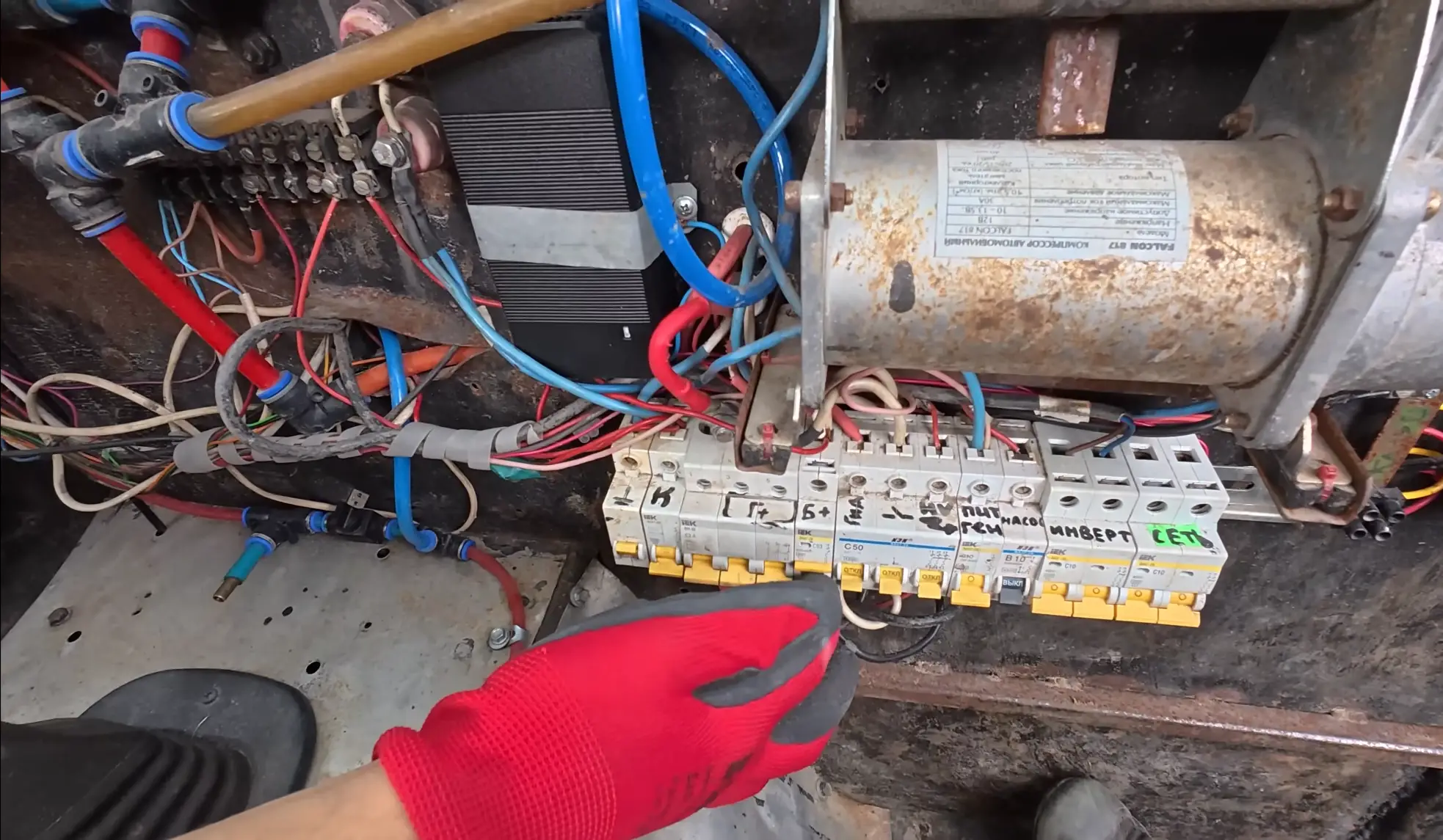
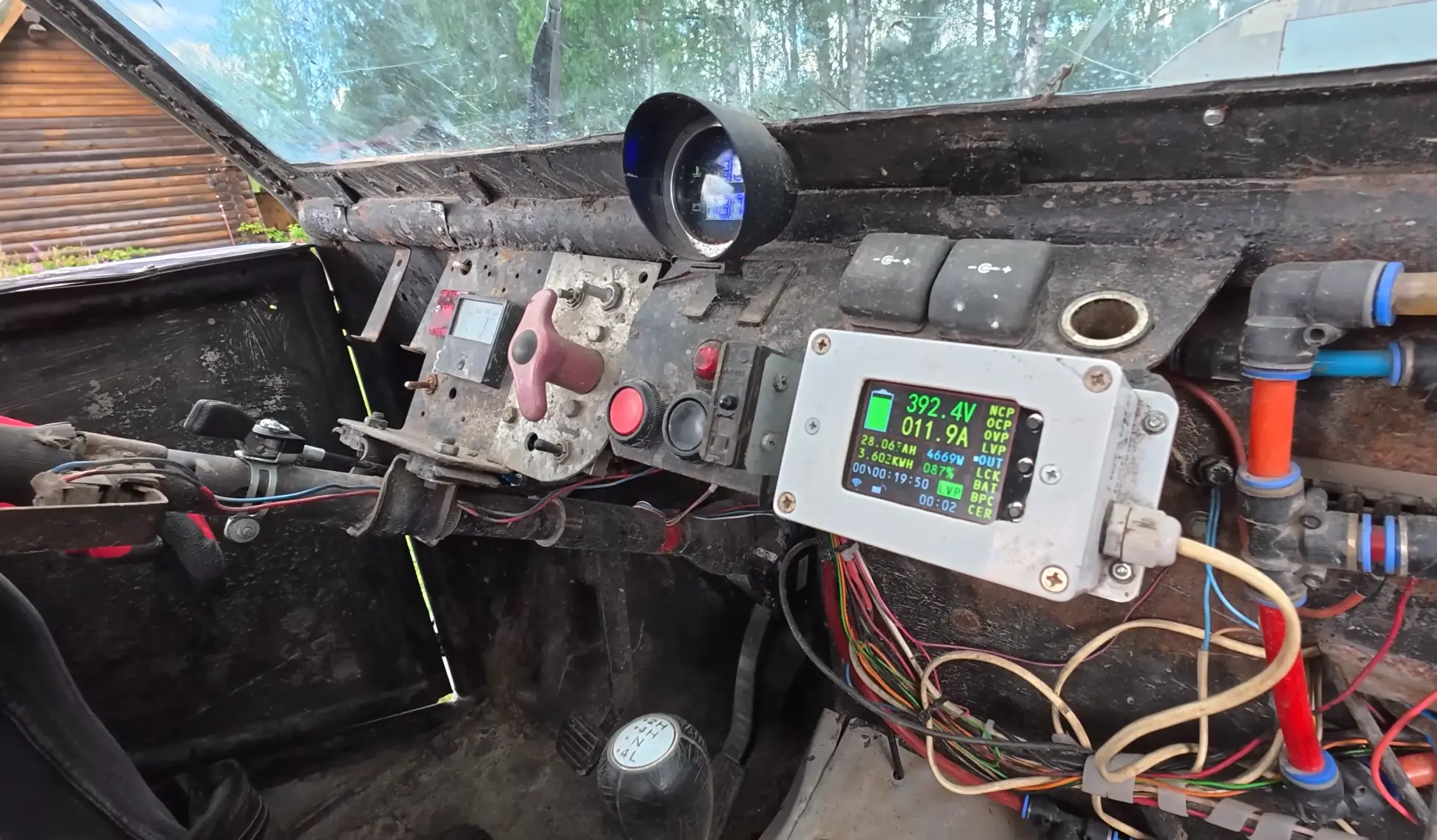
Many people still think that electric drive is only for city “EVs” that fear the first puddle and a dead battery halfway to the countryside. But in reality, it’s the opposite. Electric motors have a unique property that works off-road better than any “turbo-diesel.” It’s instant response and perfectly precise torque control. Imagine you’re stuck in a swamp, wheels sinking into liquid clay up to the hubs. What does a diesel do? It roars, revs up, but the car shakes and tears up the ground, making an even deeper hole. An electric off-roader acts differently: you press the pedal just slightly — and the vehicle smoothly, almost invisibly, begins to crawl out. No gaps, no delays, no agonizing seconds of “Will it move or not?” Another important point is that at low speeds electric drive consumes energy only during actual movement. Meaning, if you stop in the middle of the forest — consumption is zero. A diesel would keep burning fuel even idling. Add complete silence — and you get the perfect tool for hunters, fishermen, or anyone who loves quiet: no noise, no smoke, just the sounds of nature.
Technical Stuff: What’s Under the Hood
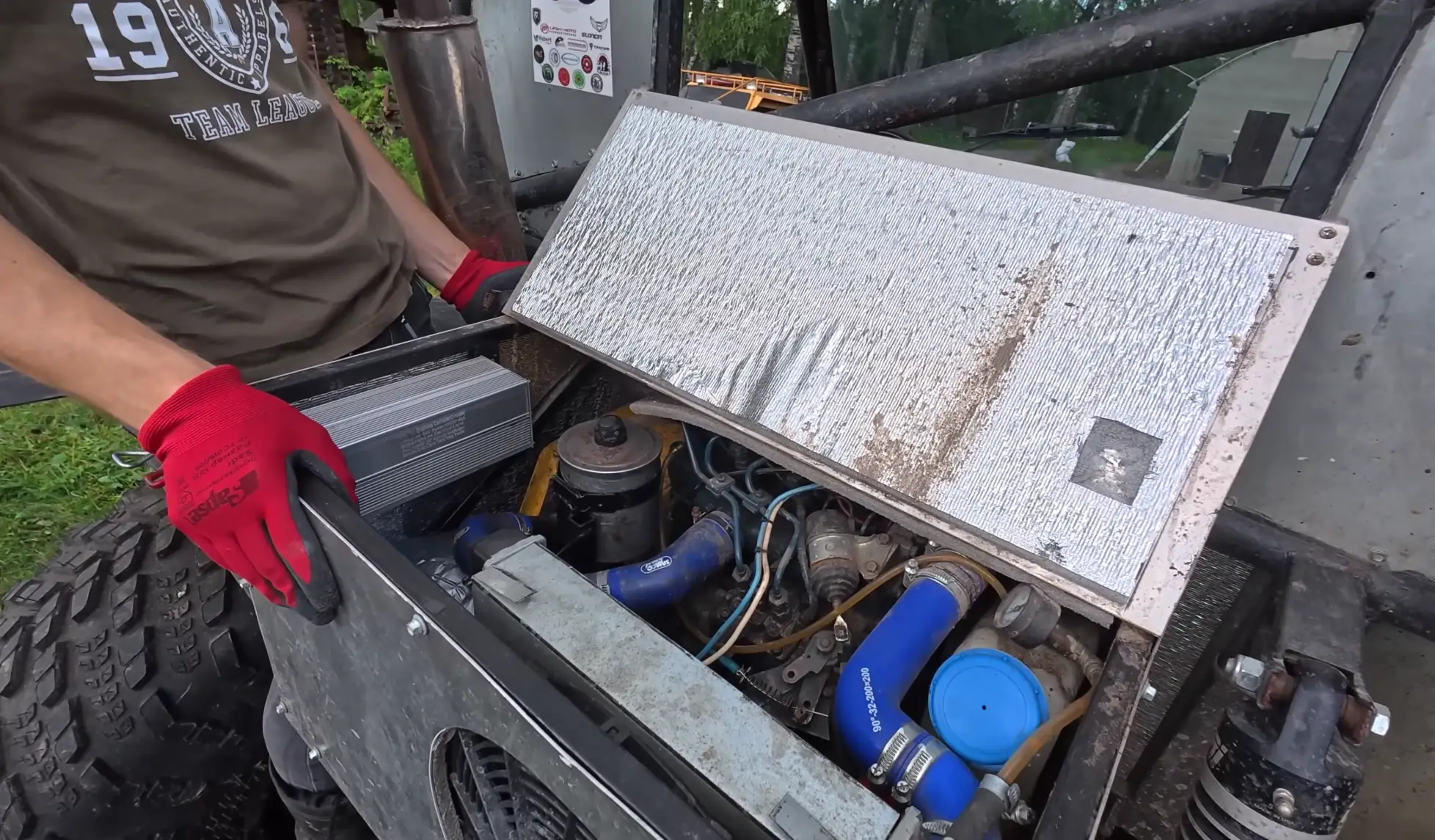
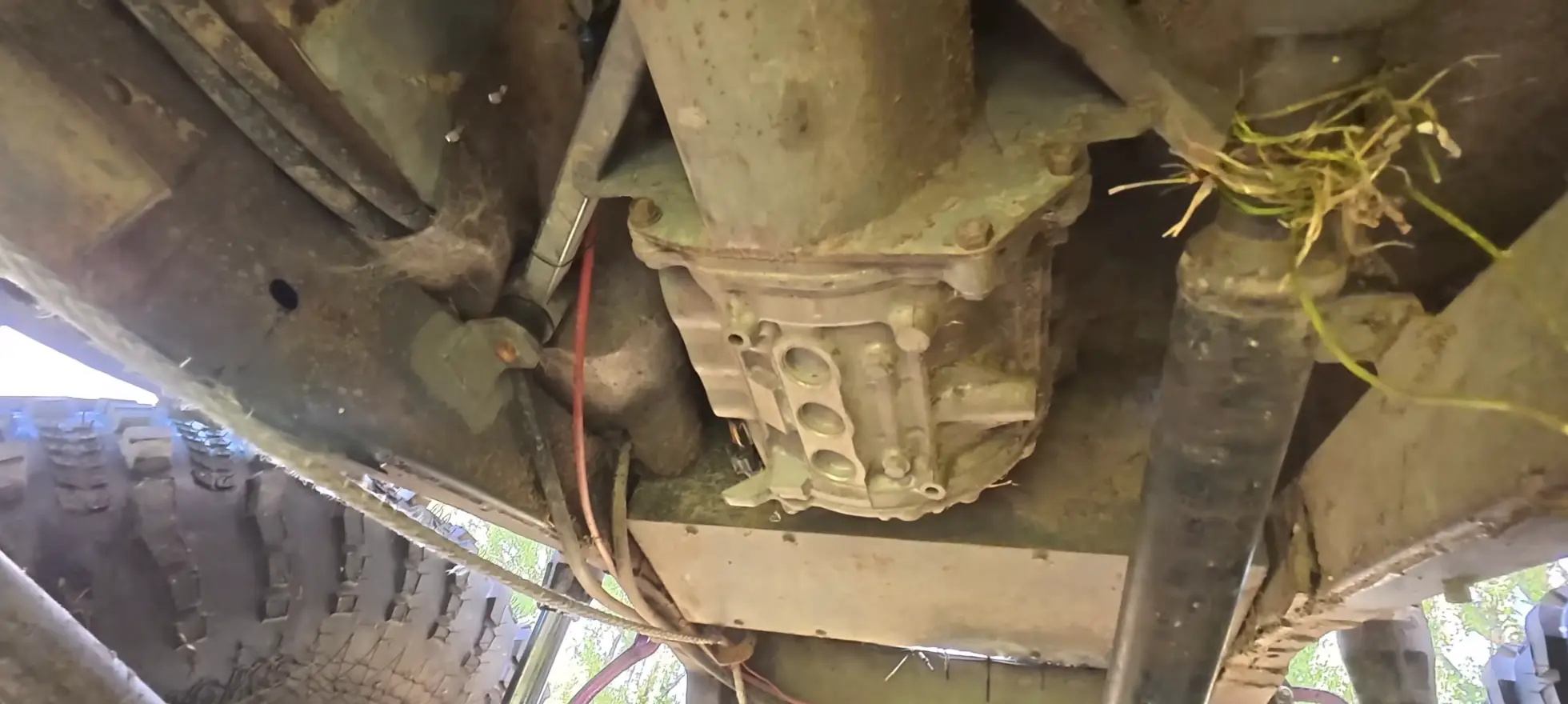
Now to the most interesting part — how this off-roader is built inside. The heart of the machine is an electric motor from the Nissan Leaf, producing 280 Nm of torque from the lowest revs and 109 horsepower. To eliminate range anxiety, the design includes a Kubota diesel generator paired with a donor unit from a Honda Civic Hybrid. This combo allows a full battery charge in about two hours. There’s even an option to cut that time to one hour if the setup’s power is increased. The 11.5 kWh battery provides 10–20 kilometers of confident off-road driving, and its capacity can be increased several times if needed. But the engineering “tricks” don’t stop there. The vehicle features homemade portal axles assembled from Gazelle parts and tractor Kirovets gears. This solution provides colossal ground clearance, letting the off-roader pass places where even Unimogs got stuck. The giant 1300×600 wheels not only make it a swamp-buggy but also allow it to float. Yes, it doesn’t sink — it actually floats. There’s also a pneumatic suspension with 18 inches of travel, hydrostatic steering from an MTZ tractor, and a homemade tire inflation system. This entire set of parts is like a puzzle put together by enthusiasts, where every piece plays a role.
Driving Experience and Emotions Behind the Wheel

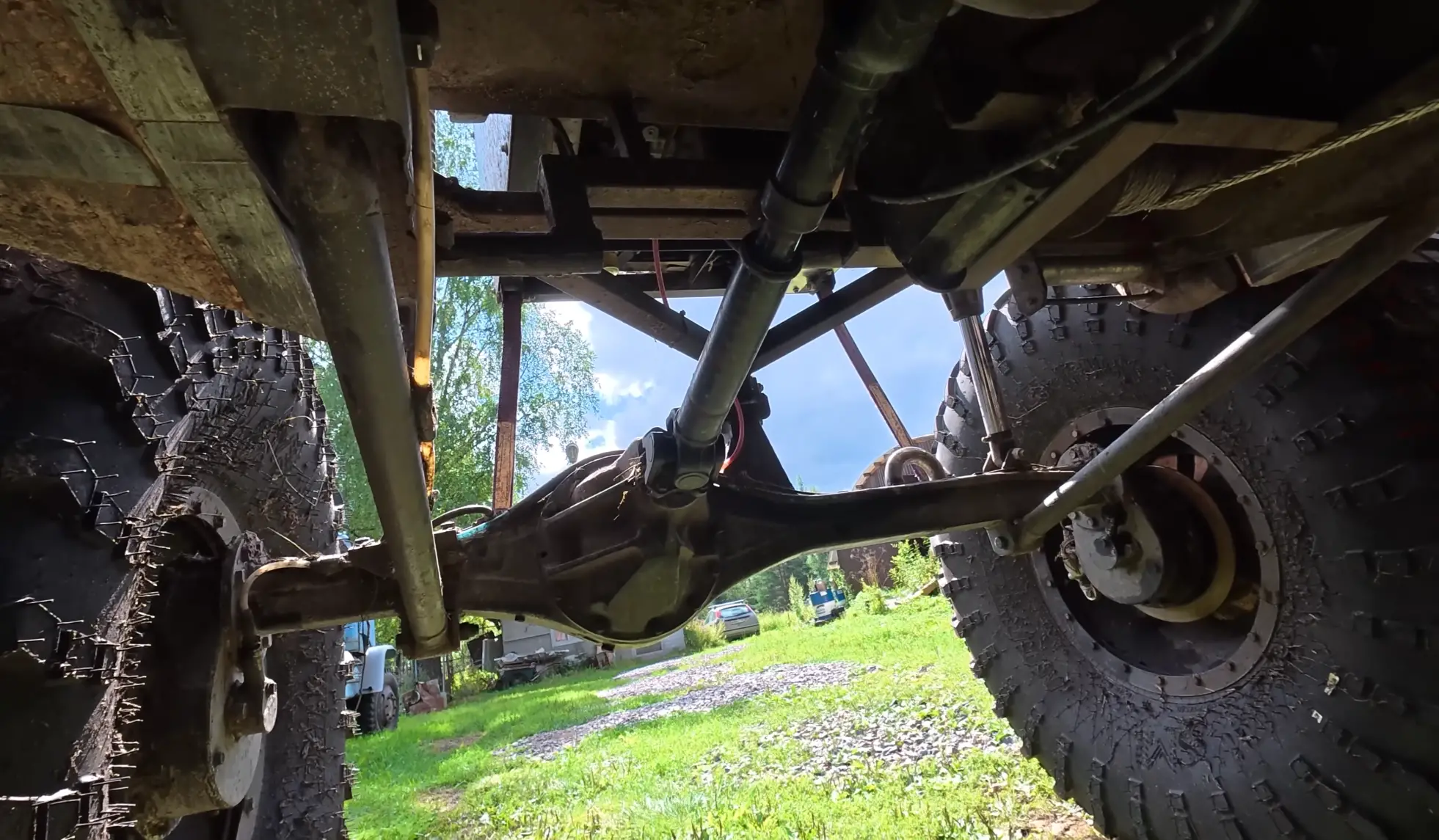
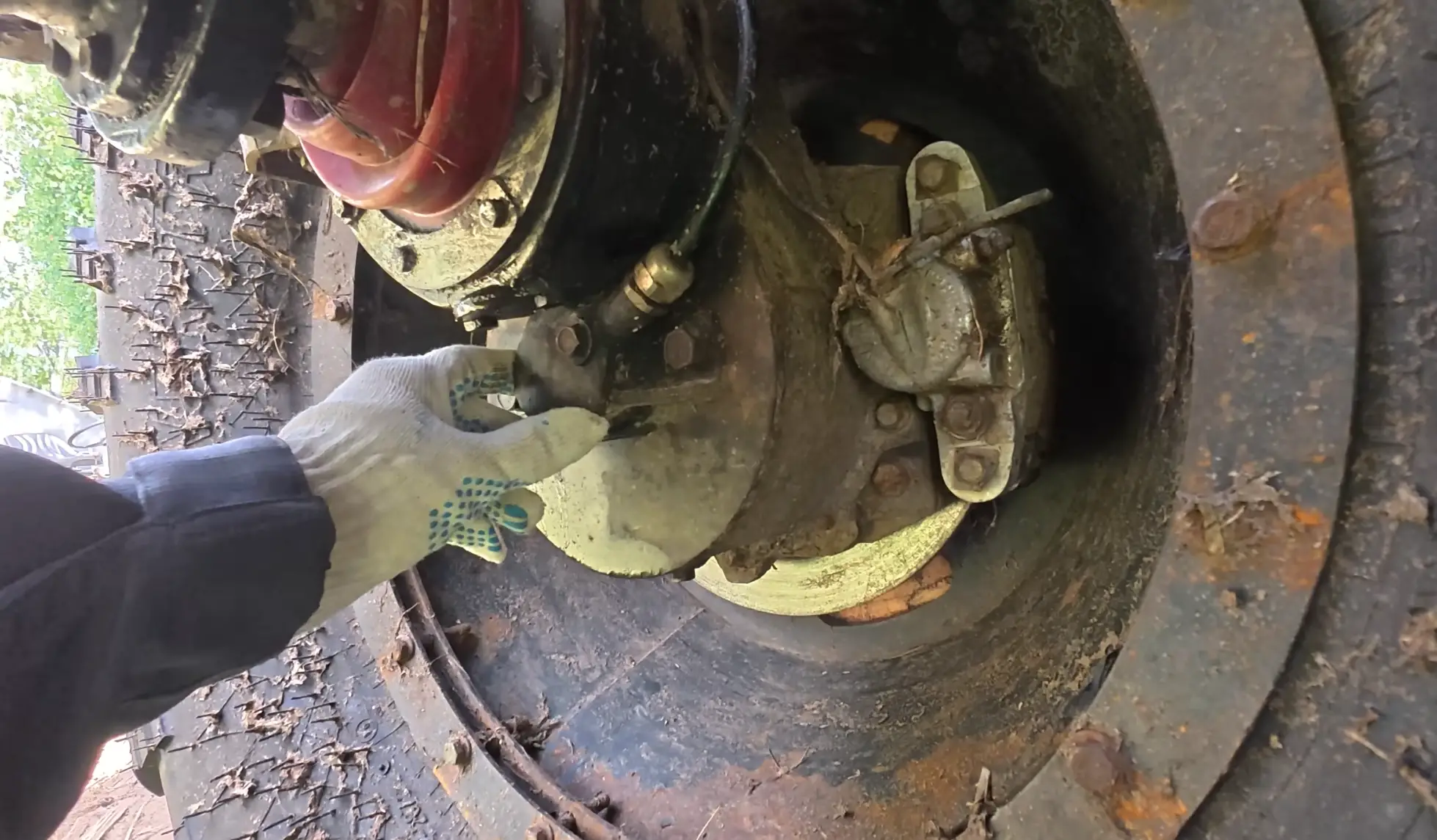
Now imagine yourself behind the wheel of this off-roader. No jerks, no shaking, just smoothness and confidence. The machine drives easily, as if it’s gliding through the swamp rather than struggling through it. The hydrostatic steering makes control comfortable, so your arms don’t get tired even after hours of driving. The suspension smooths out bumps, and it feels like you’re in an expensive SUV, not a homemade project. But the most surprising part is the dynamics. You slightly touch the pedal, and the machine reacts immediately. For those used to diesel, it’s a revelation: there, everything is slow and delayed, but here — it’s like driving a sports car, except instead of asphalt you’ve got mud and forest tracks. The creators intentionally left plenty of manual controls. Yes, there are lots of buttons, switches, and the sequence of starting and engaging the generator takes getting used to. But that’s not for nothing. Out in the forest, you won’t find a service center, and if something breaks, everything can be repaired by hand. It’s not about fancy “automation,” but about practicality. In the end, the driving experience feels like taming a real beast, which despite its power obeys every command of the driver.
The Price and Future Prospects
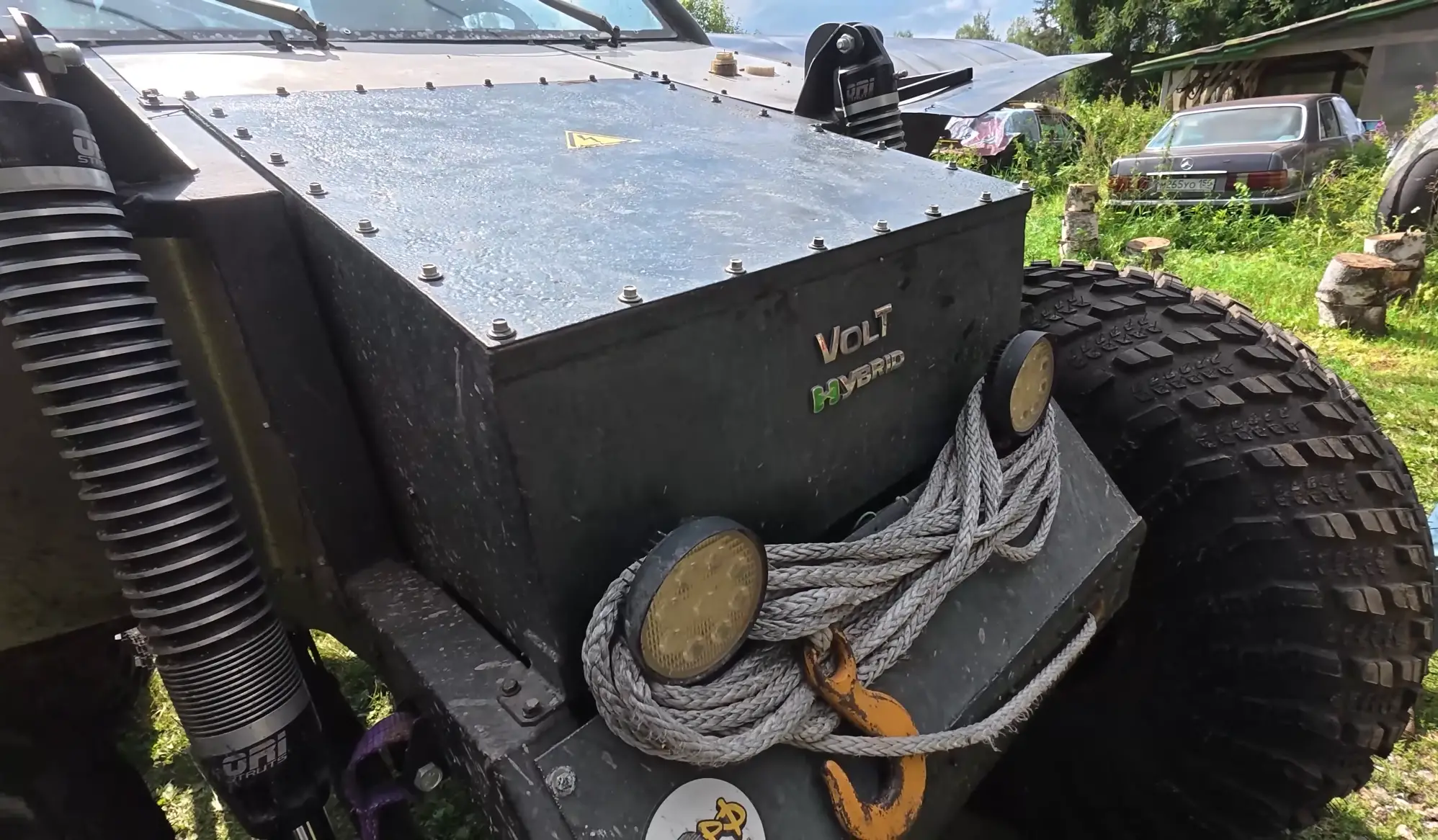

So, the big question: how much does it cost? If you build such an off-roader from scratch, the price tag will be around $37,000. Sounds expensive, but considering it’s a unique machine with no mass-produced analogues, it doesn’t seem so outrageous. Plus, many parts are second-hand components from the aftermarket. The same Nissan Leaf motor can be found for $300. The biggest cost driver is the battery — it makes up the majority of the total price. But with smart planning and available solutions, the conversion budget can be quite affordable for enthusiasts. In the long run, such machines could absolutely go into small-scale production. The creators are convinced: the future belongs to electric drive, especially off-road. Because where diesel reaches its limits, electricity opens new horizons. And while today such a project may look “garage-made” and exclusive, tomorrow such off-roaders may become a common choice for geologists, hunters, expeditions, and just fans of extreme outdoor adventures.
The electric hybrid off-roader is more than just a hobby project. It’s a real example of how enthusiasm and engineering ingenuity can change the rules of the game. It combines eco-friendliness, unique off-road capability, and technology that once seemed incompatible. Of course, it has its downsides: complex controls, limited range on a single battery, high battery cost. But the pros outweigh them: silence, comfort, the ability to float, instant dynamics, and incredible off-road capability. This off-roader is like a glimpse into the future, where vehicles not only drive us on roads but also conquer the most inaccessible places, leaving behind neither smoke nor trace. And if you ask me whether such projects have a future — I’ll answer without hesitation: yes, and very soon such electric monsters will become a familiar part of the off-road landscape.

